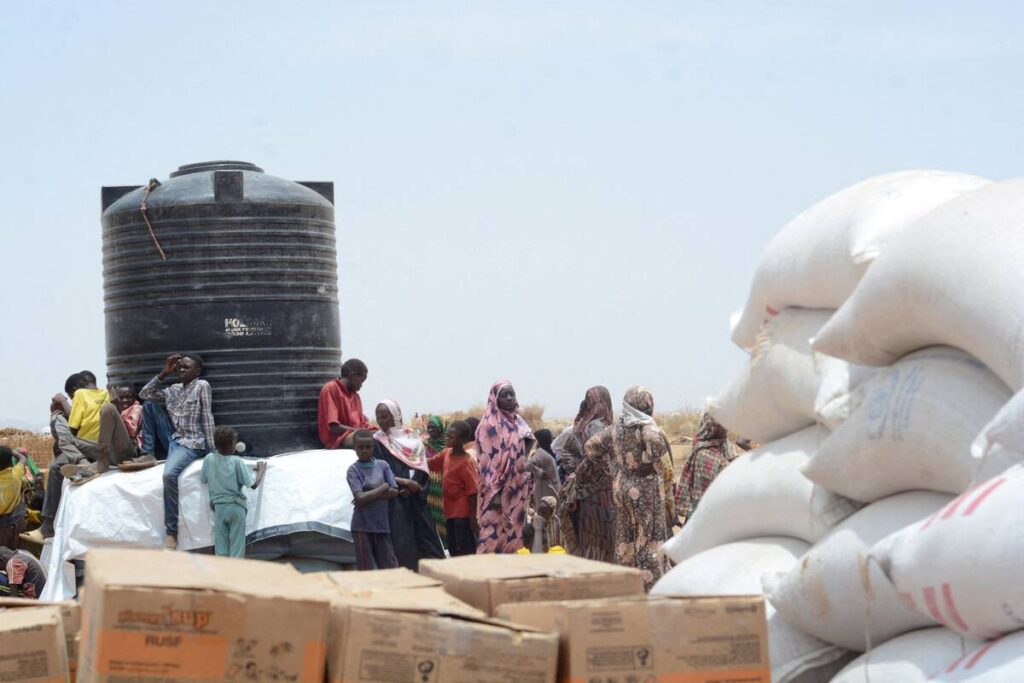World hunger levels rise for sixth consecutive year: report

More people experienced famine-like conditions in 2024 than in the previous seven years combined as humanitarian aid is blocked and violent conflict disrupts livelihoods.
“We’re seeing some western governments walking away from people experiencing extreme hunger,” said Canadian Foodgrains Bank executive director Andy Harrington in a news release.
“This is not the time for us to turn our backs. If we do, people will die.”
The Canadian Foodgrains Bank is a Christian relief and development agency originally established by farmers.
Acute food insecurity and child malnutrition rose for a sixth consecutive year in 2024, affecting more than 295 million people across 53 countries and territories, according to a UN report released on Friday.
Read Also


Drake Meats to build new facility
Saskatchewan meat company Drake Meats Processors Inc. will be building a new meat processing facility in Saskatoon that is expected to employ 200 local people once fully operational.
This marks a five per cent increase from 2023 levels, with 22.6 per cent of populations in worst-hit regions experiencing crisis-level hunger or worse.
“The sad and distressing fact is that so much of this hunger is completely preventable,” said Harrington.
“The 2025 Global Report on Food Crises paints a staggering picture,” said Rein Paulsen, director of emergencies and resilience at the UN Food and Agriculture Organization (FAO).
The number of people facing famine-like conditions more than doubled to 1.9 million — the highest since monitoring for the global report began in 2016.
Nearly 38 million children under five were acutely malnourished across 26 nutrition crises, including in Sudan, Yemen, Mali and Gaza.
“Conflict, weather extremes and economic shocks are the main drivers, and they often overlap,” Paulsen said.
Sharp drop in funding to worsen conditions
Conflict was the leading cause of hunger, impacting nearly 140 million people across 20 countries in 2024, including areas facing “catastrophic” levels of food insecurity in Gaza, South Sudan, Haiti and Mali. Sudan has confirmed famine conditions.
Economic shocks, such as inflation and currency devaluation, helped push 59.4 million people into food crises in 15 countries — nearly double the levels seen prior to the COVID-19 pandemic — including Syria and Yemen.
Extreme weather, particularly El Niño-induced droughts and floods, shunted 18 countries into crisis, affecting more than 96 million people, especially in Southern Africa, Southern Asia, and the Horn of Africa.
Forced displacement also exacerbated hunger. Nearly 95 million forcibly displaced people, including refugees and internally displaced persons, lived in countries facing food crises, such as Democratic Republic of Congo, Colombia.
Looking ahead, the UN warned of worsening conditions this year, citing the steepest projected drop in humanitarian food funding since the report’s inception — put at anywhere between 10 per cent to more than 45 per cent.
Earlier this year, U.S. President Donald Trump largely shut down the U.S. Agency for International Development, which provides aid to the world’s needy, cancelling more than 80 per cent of its humanitarian programs.
“Millions of hungry people have lost, or will soon lose, the critical lifeline we provide,” warned Cindy McCain, the head of the Rome-based World Food Programme.
Some progress seen
“It is a tragedy that for nearly 300 million people on our planet, extreme hunger is a reality through no fault of their own,” said Foodgrains Bank senior humanitarian manager Stefan Epp-Koop.
Epp-Koop travelled with Harrington to South Sudan in March to witness the devastation of the world’s largest humanitarian crisis. He said Foodgrains Bank members and their partners are providing essential aid to people experiencing extreme hunger. New programing has also been approved in countries like Haiti and Myanmar.
Despite the grim overall trend, 2024 saw some progress. In 15 countries, including Ukraine, Kenya and Guatemala, food insecurity eased due to humanitarian aid, improved harvests, easing inflation and a decline in conflict.
To break the cycle of hunger, the report called for investment in local food systems. “Evidence shows that supporting local agriculture can help the most people, with dignity, at lower cost,” Paulsen said.
—With files from Glacier FarmMedia
Source: Farmtario.com


